There were over 5.5 million homes sold during 2017 in the United States.

As a real estate agent, this is great news for you. There is plenty of real estate leads waiting to have their homes sold and the number is only going up.
But the question is, how do you get more clients and market to them?
It’s an area many agents and companies struggle with.
They have the industry skills and the know-how but don’t understand any real estate marketing strategies.
That’s what I’ll be teaching you today. By the end of this article, you’ll know exactly how to gain more clients and have plenty of real estate marketing ideas.
Sit back and enjoy the commissions rolling in.
Get Your Free Real Estate Copywriting Cheatsheet
Step 1: Create a real estate website
Do real estate agents need a website? If you want to get more real estate buyer and seller leads, then the answer is yes.
You might be listed on local directories, but nothing beats having your own site that prospects can contact you through.
It also allows you to show off your expertise with a portfolio, blog posts, case studies, and more.
Making a website isn’t as difficult as you think, either. It should be at the heart and soul of your real estate marketing plan.
There are plenty of platforms available with website building tools for affordable prices — WordPress being one of them. They take up 50% to 60% of the CMS market and account for 30% of all websites on the internet.
You’ll first need hosting, which you can get for a few dollars per month from companies like Hostgator. I use them myself for several websites and have no complaints.
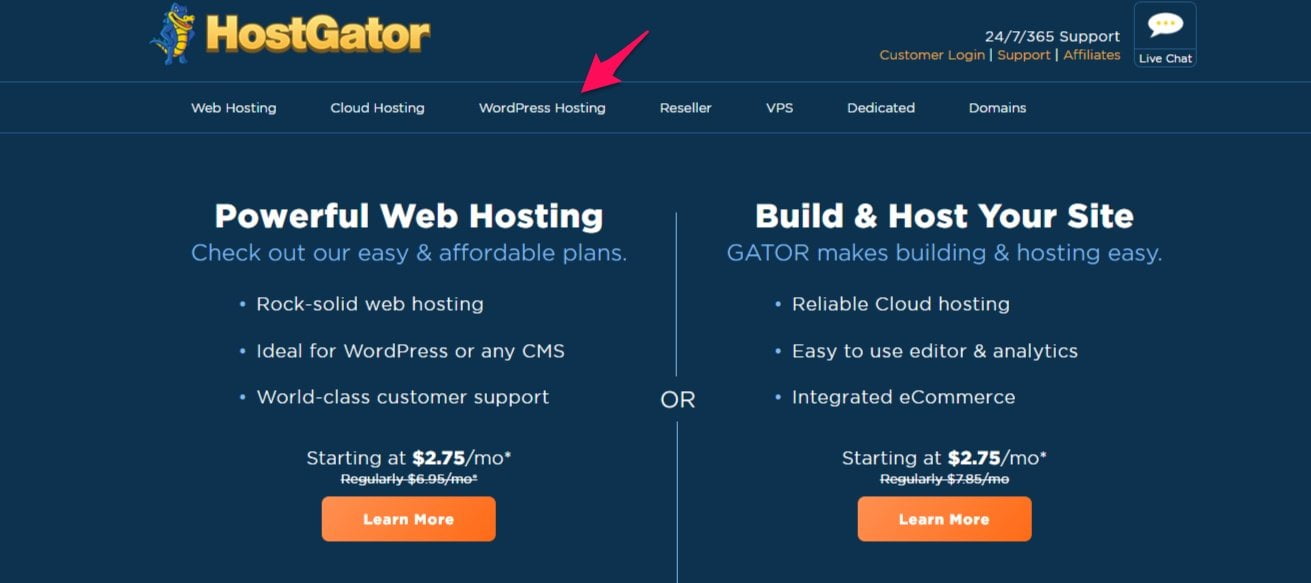
There are various hosting plans you can choose from, but if you’re specifically using WordPress then I recommend trying their WordPress package.

The starter plan only costs $5.95 per month. You can host one website with up to 100,000 visits monthly. Unless you plan to run several real estate websites, this will be the ideal plan for you.
Hostgator uses cloud technology, caching, a content delivery network, and more to give your WordPress website top tier performance.
You get a control panel that lets you access emails, databases, and other useful tools. Hostgator backs up your website daily so it’s always safe, too.
Enough about hosting, though. Let’s talk about making your website.
No matter what host you choose, follow their steps to installing WordPress. This usually involves clicking a single button. Not too hard, eh?
For example, from my Hostgator control panel, there’s this button.

I select the domain I want to install WordPress on, and then I fill out the following information before completing it.
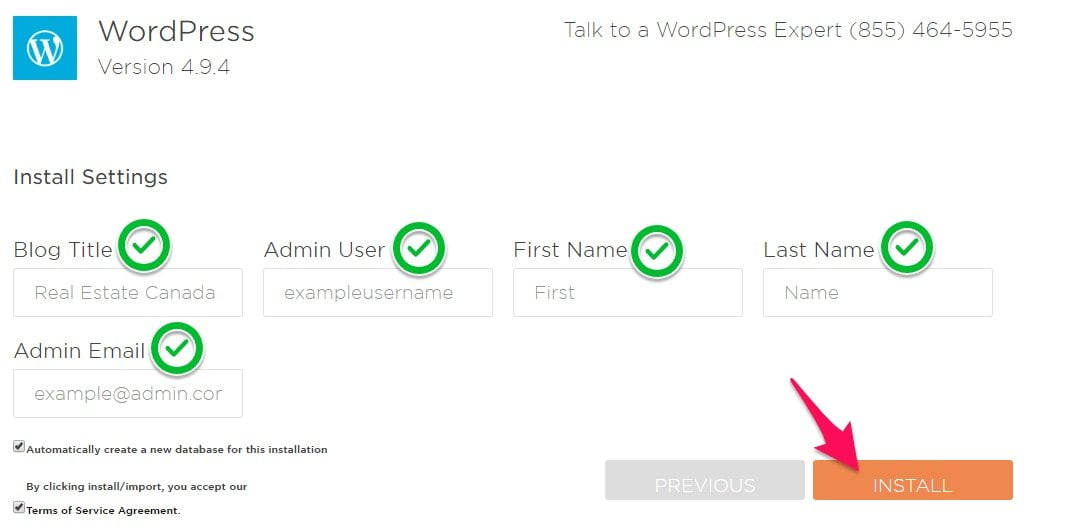
I would also recommend buying your domain and hosting from the same company to save a headache. If you’re not a computer wizard, you might have difficulty propagating a domains DNS to a separate hosting account.
But overall if you follow these steps, you’ll have WordPress installed and ready to customize. You can begin doing so from the customize tab under “Appearance” on the left side of the admin sidebar.

Here you will be edit to practically anything you want, depending on the theme you choose. Themes are rebuilt templates and I’ll show you how to install them in a moment.

On the bottom, you can switch between a desktop, tablet, and mobile preview. This will help you optimize it for each screen size.
WordPress also has a lot of great plugins to speed up your website, improve performance, and more. Navigate to the “Plugins” page from the sidebar and select “Add new”.
Search for anything you want simply hit the install button and you’re done! Some plugins might need configuring but it’s that easy to get them activated.

Here are some great resources to learn about the best plugins for WordPress:
- 24 Must Have WordPress Plugins for Business Websites in 2018
- 37 Essential WordPress Plugins You Should Install If You Haven’t Already
- The Essential Guide To Must Have WordPress Plugins
Obviously you will need to create pages for your real estate website, so make sure to read my previous blog posts on:
- Bulletproof Step-By-Step Website Copywriting Tutorial
- How to Write an About Page Customers Actually Care About
Step 2: Take advantage of social networks
84% of real estate professionals are using social media. Are you?

Social networks are some of the best platforms to expand your reach, acquire new clients, and show property you are selling.
But almost half of the real estate professionals aren’t completely comfortable using social media. Let’s clear that up right now.
The first step is to sign up and optimize your accounts on various social networks. As you can see from the above stats, most real estate agents are on Facebook, Twitter, and Linkedin.
Here’s a great example of how you should set up your account.
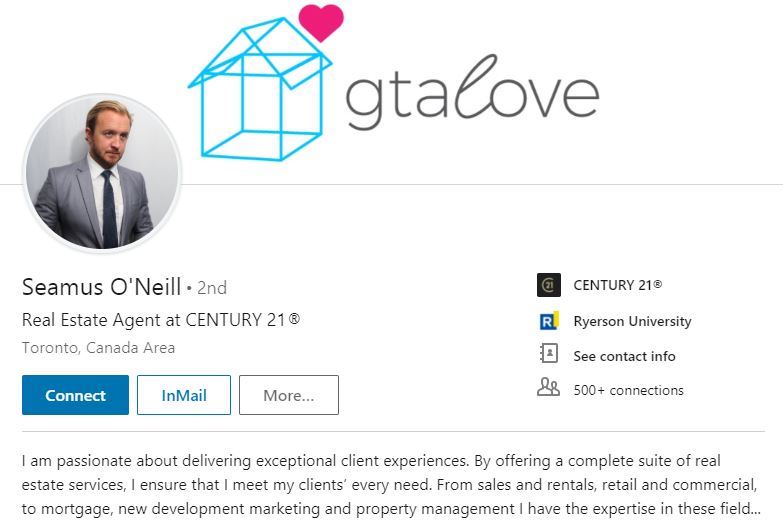
A professional picture improves your image and the overall appearance of your account. Because let’s be honest, looks do matter a bit.
Seamus uses a simple cover photo that’s related to the area he serves, the Greater Toronto Area. Yours could be of your city or a well-known monument — something recognizable by local clients.
His biography is where you need to pay attention to the most. He talks more about his clients than himself.
That’s key.
In your biography, mention what your goals are for clients and what you will provide them. Sprinkle in achievements and experience as necessary.
Once your accounts are set up, it’s time to post content and engage with the community. I’d recommend following other people in your market to begin.
On Twitter for example, you could search for “real estate agent” and select the people tab. Here you will find plenty of users to follow. There’s a good chance they will follow you back, increasing your following gradually.

It only makes sense to post listings and new property you’re selling, so always share new listings with your followers.
Just look at Laurin Jeffrey from Toronto, he uploads beautiful pictures and a link to new homes he’s selling.

Post your latest blog articles and any updates you have on your real estate business. Use relevant hashtags, too. This will expand your reach even further.
Since Facebook is the most popular platform for real estate agents, ensure that you create a Facebook page.

Here are some tips to optimize your page:
- Use a clear call to action for the button.
- Include your website link and contact information.
- Add reviews and testimonials to act as social proof.
- Add photos and videos of homes you’re selling.
- Invite friends and family to like the page.
Facebook has so much more potential other than just for making your own page, though. Groups are where the real money is at.
Search for “real estate” and optionally you can include the name of your city to narrow down the groups.

Request to join as many as you like. The more the merrier.
When you’re accepted into a group, you want to remain as a productive and active member. Jump in on discussions, offer advice, and share content you write.
Local real estate groups are perfect for advertising the property you’re selling and can easily land you clients.
Step 3: Real estate email marketing
If you’ve completed the above two strategies, you’ll have a website and social media accounts running. Perfect. What’s next?
Real estate lead generation through email marketing.
For every $1 you spend on email marketing, the average ROI is $44. Building an email list is easy and a great way to stay in touch with leads.
I’d recommend using Mailchimp as it’s free and integrates with WordPress — or practically any CMS for that matter.
MailMunch is a great plugin to create forms, landing pages, and real estate newsletters.
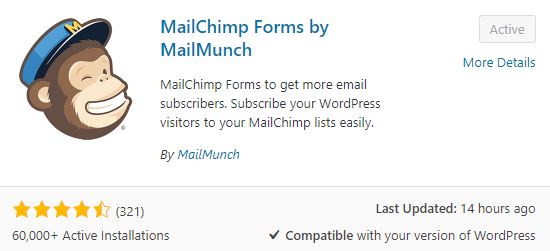
Once you have it installed, it will ask you to connect your account.
From the MailMunch page, select to create a new form.
![]()
You can then choose between a variety of form types. One isn’t better than the other until you test it and find out later. For now, I’d recommend starting out with a sidebar or popover.

The free version of MailMunch gives you a couple of free themes to choose from on the next page.
Pick whichever you believe will look better on your website.

Give your form a name to remember it and add which list you’d like it to add subscribers to.
You can create lists through your Mailchimp account to stay organized and to segment users.
From here, it’s time to design your opt-in form.
Give it a clear call to action and make it benefit-oriented.

The rest of the steps are very straight forward and you can publish it instantly once you’re done.
As you begin to collect emails, you’ll want to stay consistent with your newsletters and focus on providing as much value as possible.
This can be in the form of:
- Your latest blog posts or updates
- New property listings
- Offering a free consultation
Email marketing will keep your real estate business on people’s radar. When you want to send an email, head over to the Mailchimp dashboard. Click the “Create” button on the top right.

Choose “Create an Email” on the next page and give it a campaign name like “First newsletter”.
Next, choose the list that you made earlier, enter what name they will see as the sender, and create a good subject line. Subject lines with 30 characters or less tend to be opened more.

Designing your email couldn’t be any easier, too. Mailchimp has a drop and drop system that will blow away your subscribers.
Choose from a template to get started.

Then craft your email around a blog post, new property, or whatever topic you are informing your subscribers about. Add images, links, buttons, and anything else to get your point across.
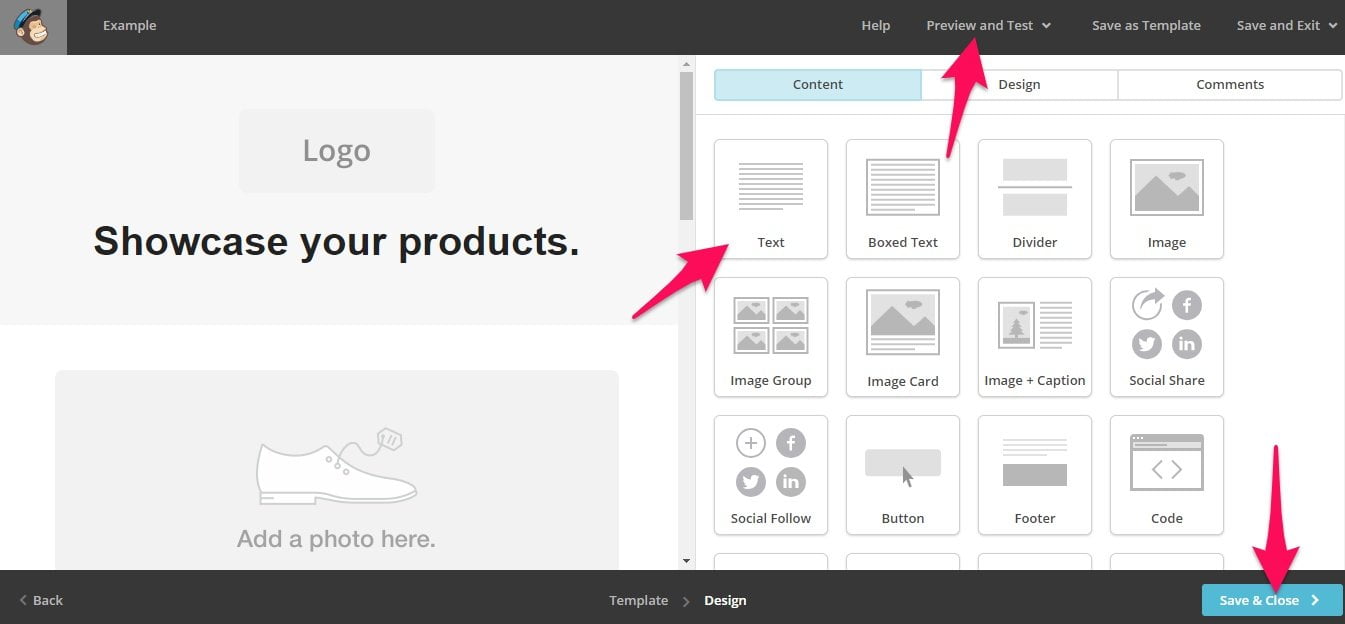
Hit the send button once you’ve finished setting up the email and your subscribers will receive it. Mailchimp displays stats such as open rates, click-through rates and more.
Use this information to analyze what types of emails get the best results.
To entice more people to sign up for your newsletter, you need to create a funnel. Yes, just like a wine funnel for all of my fellow Italians. It’s wide at the top but gets more narrow at the bottom.
Imagine the top of the funnel is getting users to opt-in, and the neck to be around the time you close them as a paying customer.
I suggest creating a lead magnet. This, as you could guess, is a piece of content that acts as a magnet. It can be a free e-book, checklist, or summary. Mailchimp allows you to add downloads and files to your campaigns, so it’s very easy to do.
And like Gary Vaynerchuk promotes — jab, jab, jab, right hook!
No, I don’t mean clobber your client. You might need to get a lawyer and give him my law firm marketing guide if that happens 😉
Jabbing means offering free value and the “right hook” is the close. A standard lead funnel I tell clients to do is the following:
- 1st day: Lead magnet
- 2nd day: Free piece of content
- 3rd day: Free consultation
It’s simple and it works. A prospect opts into the newsletter to get a free book, the next day they receive a blog post, and then you offer a free consultation.
At this point, you’ve proven yourself to be trustworthy and you just need to use your sales skills after the consultation.
Step 4: Produce content on a regular basis
Compared to outbound marketing methods like PPC, content marketing costs 62% less on average and generates up to three times more leads. Talk about ROI.
But, what exactly is content marketing? Here’s how Content Marketing Institute defines it.

The goal is to create content that attracts your ideal customer and in this case, it’s real estate clients.
Your first step is to define who your perfect reader is. What are their interests, values, and problems? This will help you craft content perfectly around their needs.
This is what we call a customer persona. Below is an example of what one would like when you’ve fleshed it out.

If you don’t know exactly who you’re targeting, don’t worry. Create a general idea and you’ll be able to refine it over time.
Next, decide what type of content you want to offer to your audience. If you’re on WordPress, blog posts make the most sense. It’s the most effective way to drive traffic to your website.
Blog posts should be strictly about real estate topics so you only get the most relevant users visiting your website.
Answer The Public is an amazing free tool to get ideas for blog posts. Just type in any keyword related to real estate and you’ll have no shortage of inspiration.
Use these questions to get into the head of your readers and to brainstorm what kind of problems you can solve for them.

What makes a good blog post, though?
Firstly, word count. The longer the blog post, the better. Long-form content is proven to rank higher and drive more organic traffic than shorter articles. Not only that, but it packs more value for the readers.
Break your articles down into headers and plan it before you begin writing. I love doing this, myself. It makes me feel organized and the writing process becomes a lot easier. Use tools like Answer the Public to center your posts around a variety of questions, and use H1, H2, and H3 tags to group them.
Imagine you have 10 headers and you write 200 to 300 words under each one. That’s a 2,000 to 3,000 word blog post 🙂
Besides blogging, don’t underestimate the power of video. Clients want to see what a house looks like inside and out. If they can’t make it to a viewing or want a preview, a video can be very convenient.
76% of marketers say that video marketing has helped them make more sales, as well.
Think about it like this — if someone watches a video for a property you’re selling and contacts you, they’re probably more serious and willing to buy.
Creating content is only half of the battle, though. Promoting it is the other.
Remember those Facebook groups you joined? Bingo! Share your content in all of them. Linkedin also has groups to do the same thing.
Post your articles on social media and send them to your email list.
I’d also recommend taking a look at Reddit’s real estate sub-reddits. There are a few where you can post your real estate articles to help drive users back to your website.
Make sure to check out my real estate content marketing article where I touch on all of these things more in-depth.
Wrapping up real estate marketing strategies
Real estate can be very lucrative, but only if you can get clients. Like any other industry, this means you have to learn proper marketing.
The first step is to create a website. Being found organically through search engines is one of the best ways to get real estate leads. WordPress supports 30% of all websites on the internet and is cheap to get running.
Take time to customize your website, create pages, and install useful plugins. Remember that a website speaks about your brand and work before you’ve even uttered a word.
Think about it from your client’s perspective. If they were to land on your website, what would the first impression be? Does your site look like it’s from 1999? Then it probably won’t be that good.
After that, it’s time to get social.
Create a Facebook page for your real estate business, join Linkedin, and sign up for Twitter. Feel free to be active on as many social networks as you like.
Follower other real estate professionals, share content, and join in on discussions. Groups are a great way to expand your reach even further.
Instagram can be very effective at getting you real estate work since you can post beautiful images of homes you sell or have sold. Use hashtags related to the city or area you’re selling in, too.
With a website and social media accounts made, get started on building an email list. Mailchimp is free and integrates right into WordPress. Embed a form right into your website and actively send newsletters.
Lastly, get your content marketing game in check. Write regular blog posts around real estate topics and take videos of the property you’re selling. Take the time to promote these to get them more attention.
Keep it consistent. All of your efforts will compound over time. Your social media following and newsletter subscribers will steadily grow. Your website will generate more traffic and you’ll be gaining more clients than you can handle.
Reach out to me if you need SEO services or content writing to scale your real estate marketing campaigns.














